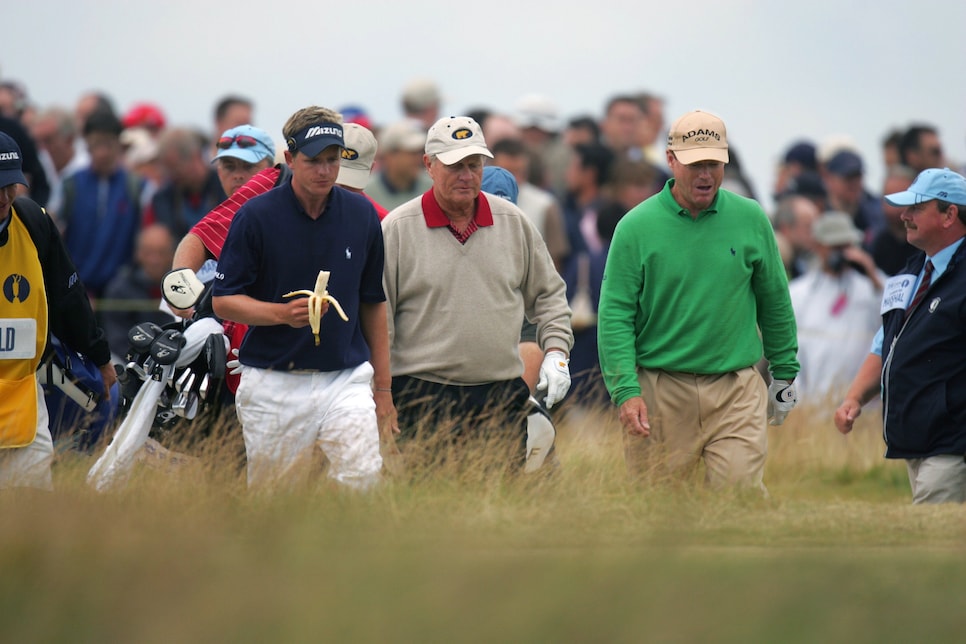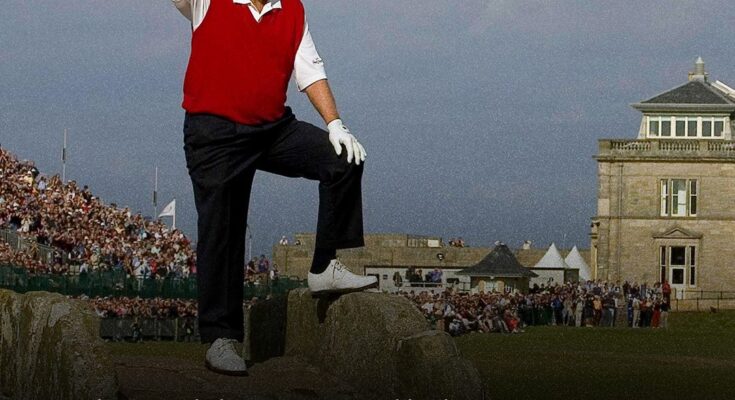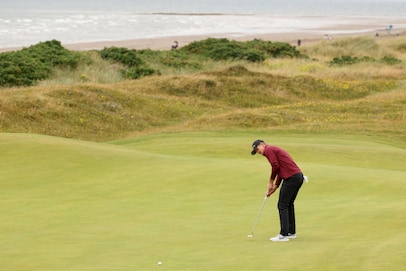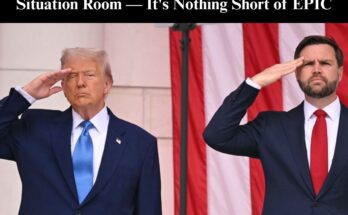En route to his annual press conference prior to the 2006 Memorial Tournament, Jack Nicklaus encountered a brief delay. He was locked out of the interview room. Yep, at his own PGA Tour event held at his own Muirfield Village Golf Club, the Golden Bear had to knock to gain entry.
As committed to a pithy remark as he ever was to major championships, Nicklaus quipped, “See, I stop playing and you forget all about me.”
The previous July, at the Old Course at St. Andrews in Scotland, Nicklaus said goodbye to competitive golf with his 38th and final appearance in the Open Championship. The venue was appropriate. St. Andrews had long been his favorite place in golf (an important distinction from his favorite course). He was smitten upon his first visit to the Home of Golf while competing in the 1959 Walker Cup. Twice, in 1970 and ’78, he had captured the claret jug at St. Andrews, and the chance to take one more walk across the Swilcan Bridge enabled him to make a graceful exit orchestrated by the R&A.
Nicklaus had first tried to bid farewell in 2000 when he played in all four majors for the last time, including the British Open at St. Andrews. The Open wasn’t scheduled to return to the Old Course until 2006. Nicklaus would be 66 and ineligible to compete because of the age limit restriction.
“I spoke to Peter Dawson [chief executive of the R&A] and asked him when we would be coming back,” Nicklaus said at the time. “He said 2006, and I said that was a shame as I would be past my eligibility. He asked me if it was held in 2005 would I play and next thing I see it was announced for 2005.”
Paired with old pal Tom Watson and Luke Donald, Nicklaus missed the cut, but his final round was electric and emotional as he cobbled together an even-par 72 on a sun-splashed afternoon aside the North Sea, punctuated by a 15-foot birdie putt on the last hole. Watson sobbed as he joined the applause from the throngs of respectful fans.
“I knew that the hole would move to wherever I hit it,” Nicklaus joked in the aftermath.
Jack Nicklaus played with Luke Donald and Tom Watson the first two rounds of the 2005 British Open at the Old Course.
John Biever
Of course it would. The hole had gotten in the way for him regularly as he collected 18 major titles, a record that once seemed vulnerable until a series of injuries scuttled Tiger Woods’ pursuit of it. Nicklaus’ record includes three British Open wins. Nice. And yet disappointing when measured against his uncanny run of consistency in which he finished sixth or better 17 times in an 18-year span from 1963-1980.
In the 20 years since his exit from the competitive arena, Nicklaus has answered a question posed to him not long after, one that he couldn’t quite answer at the time: What impact might he still have on the game?
“Well,” he replied simply, “I would hope that I could still contribute.”
It’s not unreasonable to assert that only his idol, Bobby Jones, could claim to have contributed as much to golf as Nicklaus has without swinging a club.
It starts, of course, with Nicklaus’ homage to Jones and the Masters with his creation of the Memorial Tournament in his hometown of Columbus, Ohio, a dream that reached its 50th year last month. It might not have become a major championship, but in its early years it was mentioned in the same breath.
Muirfield Village is one of the finest golf courses in the world, and the Memorial has carved out a special identity beyond its creator with its tradition of honoring great players and significant figures who made their mark in the game. Two-time Memorial winner Greg Norman once said of Jack’s event, “It’s the most important tournament other than the majors.”
Like the Masters and British Open, the 2005 Memorial was the last time Nicklaus graced the tee sheet, and he would take it as a compliment that the tournament, now a signature event on the PGA Tour, is as strong as ever without his participation.
A few weeks after leaving Scotland—where they honored him by printing a £5 note with his image on it, Nicklaus was back at work making course design visits. At the time, he had designed almost 250 signature courses. That number has slowed for various reasons, including the 2008 financial crisis, but still it has climbed to around 325 today.
Jack Nicklaus and Scottie Scheffler after Scheffler won Nicklaus’ Memorial Tournament earlier this summer in Ohio.
Andy Lyons
At age 85, Nicklaus remains the most respected and knowledgeable voice in golf as well as its finest ambassador. Ask him a question, and he will give you an honest and thoughtful answer. He can expound on virtually any issue, most notably on the sticky subject of the rollback of the golf ball—about which he has been voicing concern for more than 30 years. Whenever golf loses a significant figure—Arnold Palmer, Hubert Green, Tom Weiskopf or Charlie Sifford, to name a few—it’s Nicklaus who always is asked for comment to bring the appropriate perspective and insights.
When golf sought to be reinstituted as an Olympic sport, the International Golf Federation knew who to enlist as a global ambassador to extol the game’s virtues and competitive relevance. Nicklaus’ involvement was considered instrumental in golf’s successful bid to the International Olympic Committee.
Then there is his unofficial role as sage and muse for today’s players. Nicklaus, who twice captained winning U.S. Presidents Cup teams after his Open walk-off, is both gratified and confounded by the number of tour players who seek his audience while he hangs out at his Florida course, The Bear’s Club.
“I talk to them constantly, see ’em constantly, have lunch with them a lot, talk to ’em a bit,” he said recently. “They seem to … I don’t know why they respect an opinion of some old guy like me, but they do.”
They do because he seems to instill them with confidence or calm. Or both. The most recent examples are Rory McIlroy, who finally won the Masters after a sit-down with Jack, and J.J. Spaun, who received words of encouragement from Nicklaus at the Memorial Tournament and persevered to win the U.S. Open two weeks later at Oakmont.
Asked once about the secret to his magic touch, Nicklaus responded, “Beats me.”
Well, the guy has been around, accomplished more than anyone in the game, changed it with his talent and his ideas and his uncompromising dedication to excellence. And he still isn’t done. Twenty years after he stopped playing, Nicklaus remains a singular guidepost in golf—more for who he is and what he represents than for his major record that will endure well into this century and perhaps beyond it.
“I feel very blessed to still be involved in the game,” he said last year.
Golf should feel likewise.






